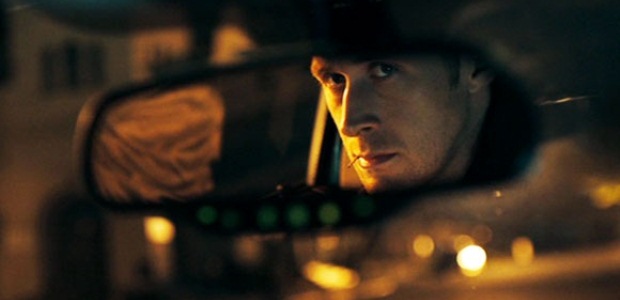Something about Ryan Gosling caught my eye when I first saw him in Murder by Numbers. Opposite Sandra Bullock, I was heavily mistaken for underestimating this relatively new actor. After Fracture, Gosling had my full attention. Not only did he refuse to be outdone by the legendary Anthony Hopkins, Gosling vindicated his star power as an up and coming actor with some serious screen charisma. With Drive, Gosling smashes it out of the park. The best part? He doesn’t even say much in the film but gets it done through sheer screen presence.
Adapted from a short story of the same name, Gosling plays a nameless Hollywood stunt car driver and mechanic, who also moonlights as a getaway car driver. As the getaway driver, his rules are simple: burglars must finish the job within a five minute window and never contact him for another heist. After helping his neighbor Irene (Carey Mulligan), and her young son, with car trouble, The Driver starts to spend time with them. Just when an air of attraction develops between The Driver and Irene, her husband Standard (Oscar Isaac), is released from prison. From here on, things turn ugly for everyone. Standard owes mobsters money for protection during his time in prison. The Driver helps Standard in what should be an easy ‘in-out’ heist, but the job is a setup and our hero ends up running the gauntlet with mobsters Bernie Rose (Albert Brooks) and Nino (Ron Perlman).
There are three names that I think deserve high praise for this film. Aside from Gosling, director Nicolas Winding Refn does a phenomenal job with almost every aspect of this film. There are flaws, some factual and some due to obvious oversight in editing, but in giving Refn the benefit of the doubt, on a whole this film is one fine piece of work. What works for Refn is the mood he creates when setting up a brooding atmosphere, along with the 1970s period setting. This is the result of seamlessly integrating an exceptional score by Cliff Martinez with intentionally mute moments. Evidently, Refn also pays attention to cinematography that focuses on a first-person perspective, literally putting the viewer in the driver’s seat. Even so, you get a feel of the world surrounding The Driver, but his past always remains a mystery. It is this mysterious past, complimented with a haunting atmosphere that gives The Driver an almost super-human personality. Towards the end, this personality makes him appear unstoppable as a man on a mission.
Coming back to characterization, and as I said before, Gosling owns it. He fits snug behind the skin of his character in a way that dates back to the days of a younger and angrier Clint Eastwood. I am not placing Gosling on par with the legend that is Eastwood; rather that Gosling’s characterization of an anti-hero is memorable and justifies comparison to the likes of Eastwood, or even Robert De Niro for that matter. When it comes to Mulligan and Gosling in the same frame, the atmosphere shifts to a whole new level arising from just flirtatious eye contact. There is a definite yet restrained sensuality between both characters and even for the few muted scenes they are together, on-screen chemistry is obvious. Another worthy mention is Brooks as the cynical antagonist with a thing for blades. Incidentally, Brooks does it better than Perlman, where both play mafia foot soldiers.
I recommend this film as a must watch for its style, story, portrayals and artistic visuals. The narration flows at a steady pace but gradually picks up momentum towards the end and includes some scenes of extreme violence when you least expect it. Thankfully, Refn doesn’t dwell too long on scenes of blood and gore.
Rating: 




http://www.youtube.com/watch?v=uleGd_xXuo4
